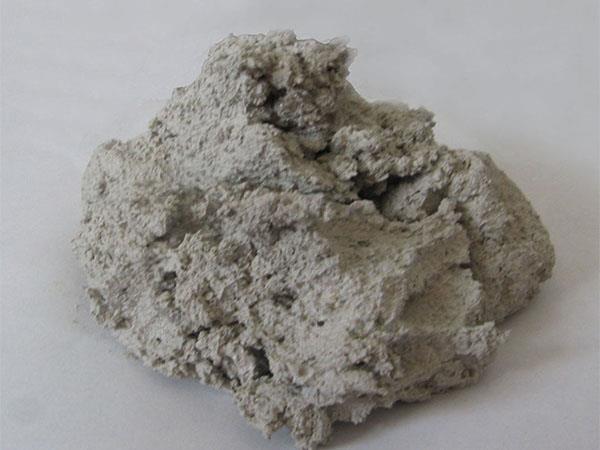Introduction to the construction of furnace lining ramming material
The materials of the furnace lining ramming material are divided into: clay, high alumina, carbon, magnesia and dolomite.
1. High alumina (or clay) ramming material construction
(1) Stirring: First, add the coarse and fine aggregates and binder (high alumina cement, respectively, into the forced mixer for dry mixing for 1-2 minutes) in the specified proportioning amount, and then add a certain amount of water for mixing and stirring for about 5 minutes.
(2) Construction: The thickness of the mixed ramming material is 80-100mm at a time, and the pneumatic hammer is used to ram continuously and evenly until the number of reciprocations of the specified bulk density is reached.
2.. Carbon ramming material construction
The carbon ramming material can be constructed by cold ramming method or hot ramming method.
Regardless of the construction method used, the carbon material should be the finished material. The cold rammed carbon material can generally be put into use directly. Before the hot rammed carbon material is rammed, the carbon material must be pre-crushed and heated evenly. The heating temperature depends on the finished material. The mixing temperature depends on the mixing temperature. There should be no hard lumps in the heated carbon material. When ramming, the hammer should be heated to dark brown, and the material temperature should not be lower than 70 degrees Celsius. Before ramming the carbon material, the working surface should be cleaned. Clean, and then pour the carbon material into layers, the thickness of each layer should not exceed 100mm. Use a pneumatic hammer to ram back and forth several times. The ramming density of each layer should be checked according to the specified density or compression ratio. , the compression ratio should be 40%-45%.
Before ramming the next layer of carbon material, the rammed surface should be roughened to facilitate the tight bonding of the upper and lower layers.
3..Magnesium ramming material construction
There are two types of magnesia ramming materials: tar magnesia and brine magnesia, which are mostly used for converters, electric furnaces, copper reverberatory furnaces, flash furnaces and other furnace bottom positions. Before construction of tar magnesia ramming materials Coal tar is heated to about 130 degrees Celsius for dehydration, and magnesia and iron oxide powder are heated to above 1100 degrees Celsius for drying.
When the bricklaying is completed, the surface of the wet brickwork is heated and dried to remove the moisture (dry masonry does not need to be heated), and a layer of coal tar is painted on the surface of the masonry. The combined ramming material is poured in layers, the thickness of each layer is 70-80mm, and the compression ratio is 50%. The ramming is usually carried out from the center of the furnace to 4 weeks, so as to prevent the oil from being squeezed to the center to form a soft spot (spring body) .The wind pressure of ramming should not be less than 0.5MPa.

Previous: What material is used for the lining of the intermediate frequency furnace?
下一条: What should be paid attention to in material selection of intermediate frequency furnace charge
Related Industry Knowledge
- Features and Benefits of Coil Clay
- What are the advantages of a good furnace lining
- Misunderstandings in the use of ramming materials in intermediate frequency furnaces
- Phenomenon analysis of failure of argon blowing of ladle permeable bricks and how to improve the rate of argon blowing
- Where is the consumption reduction and energy saving of breathable bricks reflected?
- How to improve the service life of intermediate frequency furnace lining
- Reasons for damage to intermediate frequency furnace lining and how to solve them
- The performance and advantages of breathable brick
- Analysis of Structural Characteristics of Dispersive Breathable Bricks
- The intermediate frequency furnace charge knotting process needs to pay attention to details sharing
- What material is used for the lining of the intermediate frequency furnace?
- What reasons will affect the service life of the intermediate frequency furnace lining?
- What should be paid attention to in material selection of intermediate frequency furnace charge
- Ramming material manufacturers tell you how to improve the crack resistance of explosion-proof refractory castables
- Importance and characteristics of raw material structure of intermediate frequency furnace charge
- How to protect the lining of the intermediate frequency furnace
- What are the useful explosion-proof agents in unshaped refractories
- How to correctly construct the ramming material in the intermediate frequency furnace
- What are the special advantages of using coil insulating glue?
- Furnace lining manufacturers tell you the operation steps of the oven


